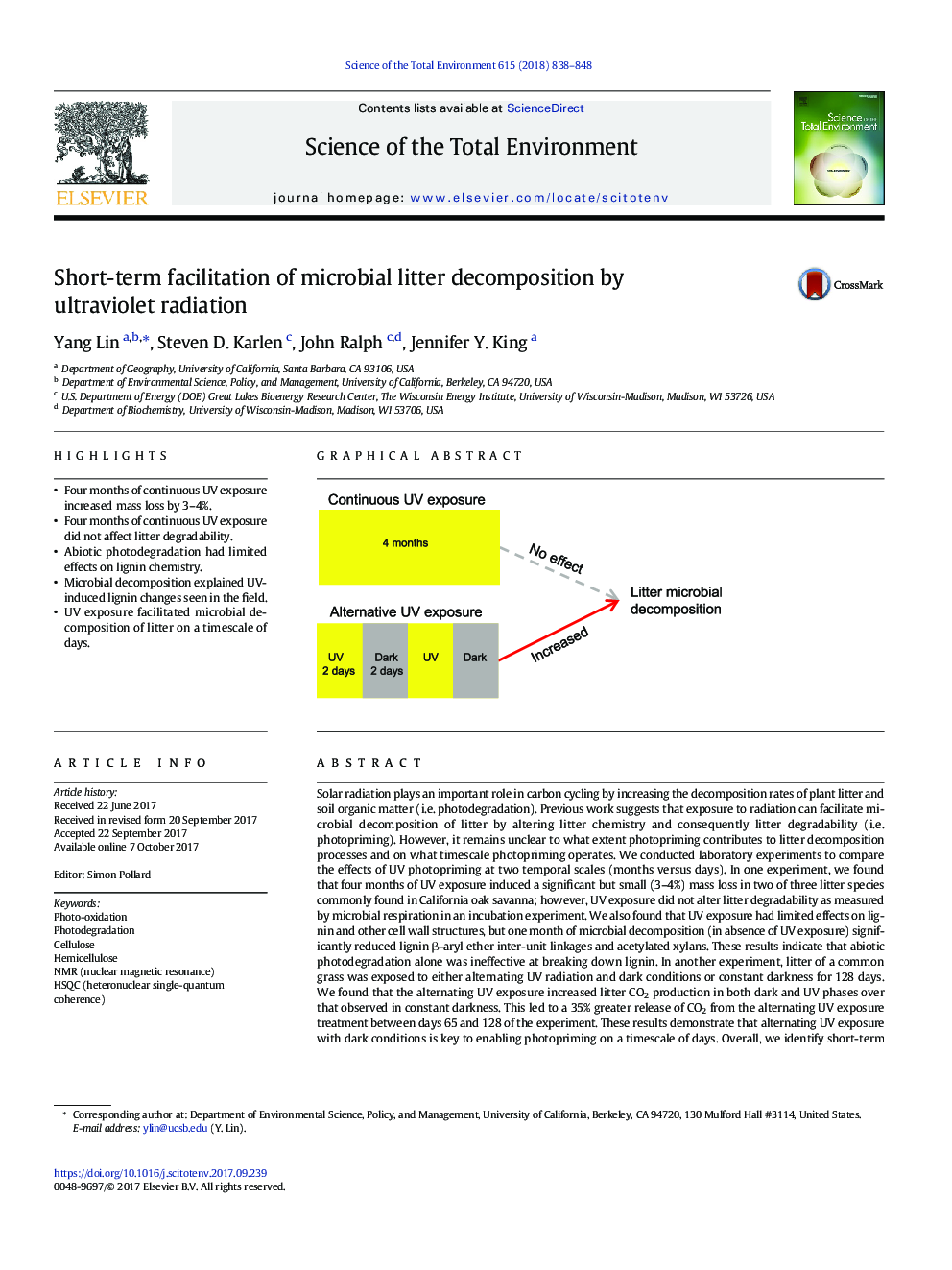| کد مقاله | کد نشریه | سال انتشار | مقاله انگلیسی | نسخه تمام متن |
|---|---|---|---|---|
| 5749840 | 1619689 | 2018 | 11 صفحه PDF | دانلود رایگان |
- Four months of continuous UV exposure increased mass loss by 3-4%.
- Four months of continuous UV exposure did not affect litter degradability.
- Abiotic photodegradation had limited effects on lignin chemistry.
- Microbial decomposition explained UV-induced lignin changes seen in the field.
- UV exposure facilitated microbial decomposition of litter on a timescale of days.
Solar radiation plays an important role in carbon cycling by increasing the decomposition rates of plant litter and soil organic matter (i.e. photodegradation). Previous work suggests that exposure to radiation can facilitate microbial decomposition of litter by altering litter chemistry and consequently litter degradability (i.e. photopriming). However, it remains unclear to what extent photopriming contributes to litter decomposition processes and on what timescale photopriming operates. We conducted laboratory experiments to compare the effects of UV photopriming at two temporal scales (months versus days). In one experiment, we found that four months of UV exposure induced a significant but small (3-4%) mass loss in two of three litter species commonly found in California oak savanna; however, UV exposure did not alter litter degradability as measured by microbial respiration in an incubation experiment. We also found that UV exposure had limited effects on lignin and other cell wall structures, but one month of microbial decomposition (in absence of UV exposure) significantly reduced lignin β-aryl ether inter-unit linkages and acetylated xylans. These results indicate that abiotic photodegradation alone was ineffective at breaking down lignin. In another experiment, litter of a common grass was exposed to either alternating UV radiation and dark conditions or constant darkness for 128 days. We found that the alternating UV exposure increased litter CO2 production in both dark and UV phases over that observed in constant darkness. This led to a 35% greater release of CO2 from the alternating UV exposure treatment between days 65 and 128 of the experiment. These results demonstrate that alternating UV exposure with dark conditions is key to enabling photopriming on a timescale of days. Overall, we identify short-term photopriming as a novel mechanism behind photodegradation. Our results also challenge the conventional hypothesis that abiotic processes are primarily responsible for degrading lignin during photodegradation.
128
Journal: Science of The Total Environment - Volume 615, 15 February 2018, Pages 838-848
